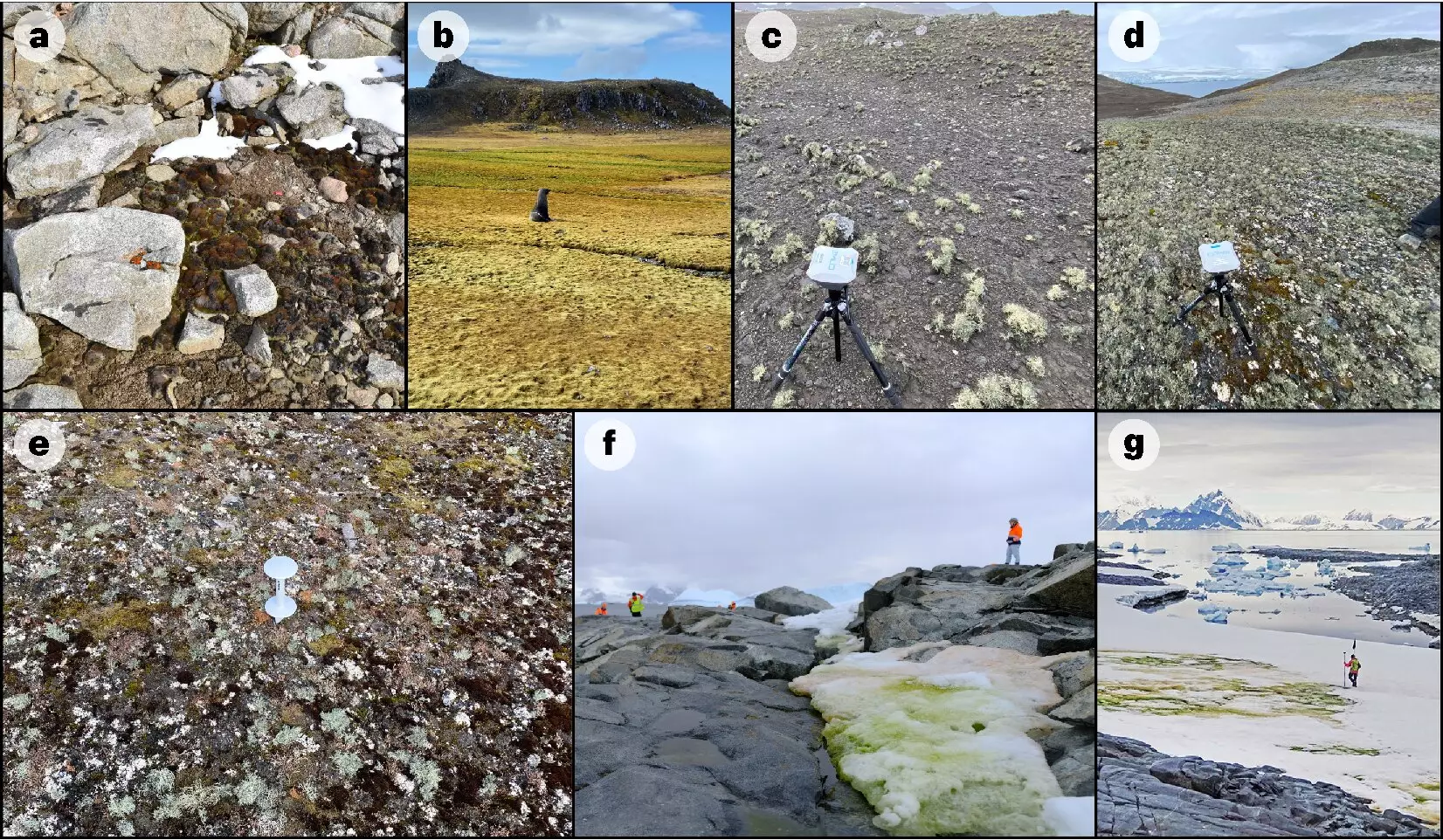In a groundbreaking initiative, researchers have conducted the first continent-wide mapping study of plant life in Antarctica, revealing significant insights into previously unexplored vegetation zones. The research, published in the esteemed journal Nature Geoscience, employs advanced satellite technologies and on-ground measurements, offering a new lens through which to examine the continent’s ecological health and its responses to climate change. Through this extensive survey, scientists aim to establish a crucial baseline not only to monitor existing flora but also to safeguard its future amidst rising global temperatures.
The study, spearheaded by a collaboration between the University of Edinburgh and associated institutions, utilized satellite imagery sourced from the European Space Agency. This technique allowed for a comprehensive sweep across the Antarctic landscape, identifying nearly 45 square kilometers of vegetation—an area roughly threefold that of Lake Windermere in the Lake District, UK. This finding is particularly significant given that more than 80% of the detected vegetation is concentrated in the Antarctic Peninsula and nearby islands, raising important questions about the distribution of plant life in this frigid ecosystem.
Despite representing only 0.12% of the Antarctic’s total ice-free territory, the identified growth holds vast ecological implications. Dominated by resilient mosses and lichens, the flora found in Antarctica plays a crucial role in carbon sequestration and nutrient recycling, thus supporting the delicate balance of the local ecosystem. Importantly, understanding the geographical spread and density of these organisms is critical for implementing effective conservation strategies.
Historically, Antarctic vegetation has been under-monitored, and existing protection measures, primarily under the Antarctic Specially Protected Area (ASPA) system, have often proven inadequate. As such, this mapping study serves as an essential tool for scrutiny and enhancement of existing conservation policies, indicating the need for a more comprehensive framework to protect these vital ecosystems.
The significance of Antarctic flora extends beyond its immediate environment. Previous studies have shown that the unique adaptability of these plant species makes them reliable indicators of climate shifts. Their sensitivity to environmental changes positions them as crucial monitoring agents not just for Antarctica, but as a template for understanding similar ecological responses in other vulnerable regions around the globe, including parts of the Arctic.
By mapping vegetation, researchers can draw parallels and predict how different ecosystems might react to climate developments over time. Moreover, the findings suggest that the areas of newfound growth could become pivotal focal points for observing future shifts in climate and landscape dynamics, offering vital information as we navigate the complexities of climate science.
For the first time, an extensive and systematic inventory has been created, particularly for the less accessible regions of Antarctica. According to Charlotte Walshaw, one of the lead researchers, this mapping effort has transformed our understanding of vegetation distribution in these rarely visited locales. “Our continent-scale map provides key information on vegetation presence in areas that are rarely visited by people,” she stated, emphasizing the transformative impact of remote sensing techniques in ecological research.
Dr. Claudia Colesie highlighted the tenacity of these organisms, noting, “Lichens and mosses in Antarctica encounter the harshest living conditions on the planet on a daily basis. Only the most resilient organisms can thrive there.” This observation underscores the urgency of targeted conservation efforts, as identifying these resilient ecosystems can enhance protective measures tailored to the specific needs of Antarctic flora.
Remote sensing technology offers a low-impact, efficient method for ongoing monitoring of the fragile Antarctic ecosystem, promising a pathway for continuous observation of vegetative changes moving forward. As the world grapples with climate change, understanding and protecting the resilient biomes of Antarctica could serve as a model for ecosystem preservation efforts worldwide.
The implications of this pioneering mapping study transcend mere academic knowledge; they beckon a proactive response to the challenges posed by climate change. As we gain insight into the plant life of Antarctica, it becomes increasingly clear that our efforts must aim towards preserving these indigenous species, which offer unparalleled insight into the health of our planet. We stand at a crucial juncture where scientific knowledge and conservation must intertwine, ensuring that the resilient flora of Antarctica continues to thrive, even in the face of global climatic upheaval.


Leave a Reply